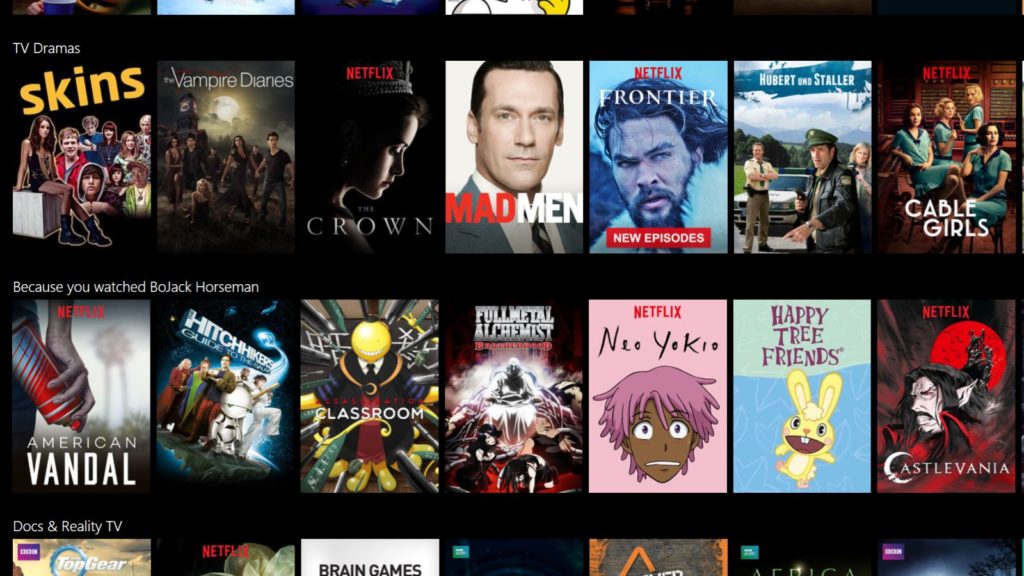Five years ago, launching a decent streaming platform took millions. Now? A teenager with a laptop can build something that reaches millions. That shift…
The taggers of Netflix: the job you probably want, but never knew existed

There are some jobs that go unrecognised by most of us every day. Those who clean our streets is a great example. Those who reshelve shopping malls an even better one. But one you probably didn’t even realise existed is what Netflix calls a “tagger”.
This small group of people — between 30 to 40 globally — are well versed in screenwriting or movie critique, watch content 40 hours a week, picking up and jotting down nuances, moods, features and traits inherent in these works.
They then tag them with the corresponding metadata.
At this point, you’re probably wondering why the company isn’t advertising these jobs (it does, but always receives an overwhelming response I’m told), because it sounds great. But as entertaining as it sounds, it’s probably one of the company’s most important roles.
Netflix’s algorithm works in conjunction with the tagger’s input. While computers can recognise patterns and habits that form during spans of content binging, they can’t pick apart traits in works. And it’s these small nuances that keep us coming back to particular shows and movies.
‘We could have algorithms without context, but… people don’t choose shows they love’
“The human voice to the algorithm, or the ghost in the machine, that’s basically providing the sense to what the algorithms is trying to determine,” notes Mike Hastings, Netflix’s director of enhanced content, former movie critic, and a key figure in Netflix’s tagging programme since 2008.
This co-operation fuels the company’s recommendation engine. Arguably, if this system didn’t exist, Netflix wouldn’t have 109-million users worldwide.
“We could have algorithms without context, but we find that when we’ve done and tested that, people don’t make choices as quickly. People don’t choose shows that they love. We need something to make sense of that, and tagging is how we do it,” he told Memeburn in an interview.
Will a computer know if Stranger Things is a bildungsroman, or a critique of family structure, whether it involves supernatural forces or is set in the 1980s? Probably not. But human beings can.
Taggers are also responsible for introducing new tags if a show introduces a new concept. Hastings notes that “bullying” has recently been added to the phrase list, which now equates to some 50 000 individual tags.
This myriad of tags also allows the company to granularly personalise the service’s experience across all users. According to the company, no two profiles are alike, and that’s largely due to users’ viewing habits, the algorithm and those tags.
For instance, Hastings gave an example of the movie Tangled.
While it might appear under the “family adventure” heading for one user, it may appear as an “animated kids movie” on another. Tags, in addition to information garnered from user habits, allows the company to privilege what consumers would most likely like to see.
Netflix has been using the tagging system since 2010
“Watching is the most powerful signal,” Hastings explains.
“Those other signals, like did you search for that genre, and did you click on some of those shows, and did you add them to your list; those are different signals that we might take into account. Obviously, the most powerful signal is did you watch any of it, and did you watch a lot of it… or all of it.”
Adding content to your queue, or something as subtle as not clicking on any titles in a given row, also adds to the information store.
“If my team sees that a tag we’ve created is not getting any clicks, then we’ve probably got something wrong, because the titles should be compelling to you.”
This sounds like emotional marketing, but Hastings explained it’s more than just suit-wearing wizardry employed here.
“We don’t think about what we do, with tags, from much of a marketing perspective. We generally think about it from a geekier perspective. But that said, our whole point is to reflect back to the user, like ‘Hey you might be interested in these things based on what you’re watching’.”
“That’s kind of where the emotion comes into it.”
Netflix also engages with the community, too, if they feel a tag is experimental or possibly too vague. “Adrenaline rush” was one such tag. According to Hastings, the tag underwent a survey posed to action fans, and was questioned by the taggers themselves.
“By that point it’s less marketing and flowery, and more vetted.”
At this point, though, you probably want to know more about the actual job. For one, Hastings didn’t quite provide an exact salary, but did explain taggers are paid hourly like permanent staffers.
At present, there are no taggers based in South Africa, but the company isn’t ruling it out just yet.
“It’s a job that’s good enough that they want to stay doing it for a long time,” Hastings chuckled.
Andy Walker is a guest of Netflix in Berlin.


